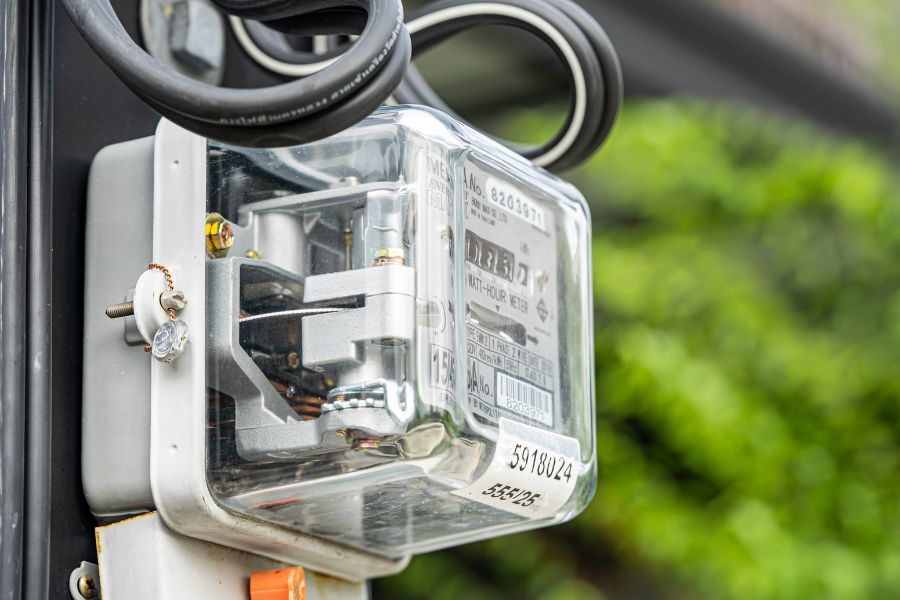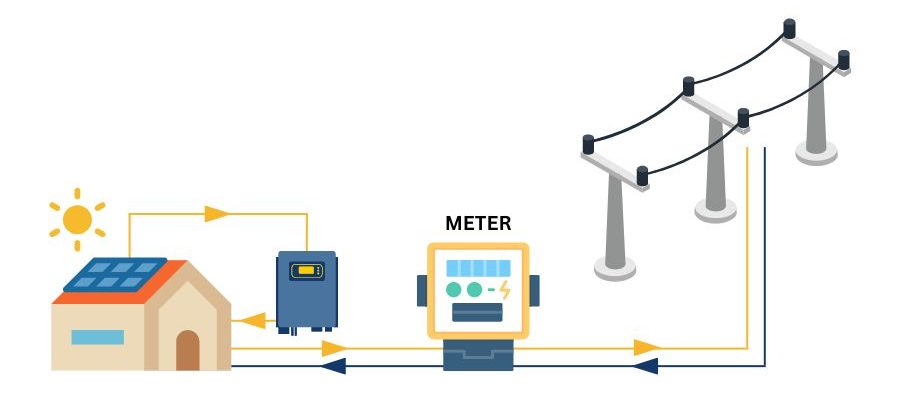Wondering how much KW is required for a house in India? Well, we got you covered. With the growing concern for environmental sustainability and the increasing cost of conventional energy sources, many households in India are turning to solar power as an alternative energy solution.
Solar power offers a clean, renewable, and cost-effective way to meet the energy needs of a house. However, determining the correct capacity of the solar power system can be a complex task. Tools like a kilowatt hours to watts calculator can be invaluable in making these calculations.
This article will explore the factors influencing the required kilowatt (KW) capacity for a house running on solar power in India. We’ll also guide you on how to use these calculators to estimate your home’s energy requirements.
Understanding Kilowatts (KW) and Electricity Consumption
Kilowatts (KW) are the units that measure the rate of electrical energy consumption. When it comes to solar panels and installing a solar panel system, determining the KW capacity and how many solar panels are needed depends on factors such as energy consumption, location, panel efficiency, battery storage, and grid connectivity.
By assessing these factors, homeowners can determine the appropriate KW capacity and the number of solar panels required to harness solar power effectively. This understanding is crucial for designing an efficient and sustainable solar panel system for residential use.
Factors Influencing Power Requirement in Indian Homes
Energy Consumption

The first step in determining the KW capacity for a solar power system is to evaluate the household’s energy consumption.
To accurately assess energy consumption, homeowners should review their electricity bills or use a power meter to track usage over a specific period. This data will provide valuable insights into the monthly average power consumption in kilowatt-hours (kWh).
When installing solar panels, understanding the monthly average power consumption is crucial. It helps determine the appropriate KW capacity for the solar system. Additionally, factors like solar panel wattage and the number of solar panels required can be calculated based on the energy consumption data.
By analyzing these factors, homeowners can make informed decisions regarding installing solar panels and designing a system that efficiently meets their energy needs.
Location and Sunlight Availability
When installing solar panel systems, the house’s geographical location is a crucial factor to consider. In India, sunlight availability varies across different regions due to the country’s vast size.
Areas with higher solar irradiance require a lower KW capacity, while regions with lower solar irradiance need a higher capacity to generate the desired amount of electricity. When assessing the solar panel’s efficiency, factors such as latitude, climate, and shading must be considered.
By understanding the sunlight availability in your location, you can determine the optimal number of solar power panels needed to meet your monthly electricity consumption. This information allows for accurate sizing and ensures you install the right solar panels to maximize energy generation and efficiency.
Proper consideration of location and sunlight availability is critical to designing an effective and successful solar panel system for your home.
Panel Efficiency and Performance

The efficiency of solar panels plays a significant role in determining the required KW capacity for a house. Solar panels available today have efficiency levels ranging from 15% to 22%, which means they can convert only a certain percentage of sunlight into electricity.
Higher-efficiency panels are more desirable as they require a smaller capacity to generate the same amount of electricity than lower-efficiency panels.
When considering how many solar panels are needed for a solar panel system, it is recommended to choose high-efficiency panels. This selection maximizes energy output and optimizes the overall performance of the system. By using high-efficiency solar panels, homeowners can generate more electricity from a smaller number of panels, reducing the physical space required for installation.
To accurately determine the number of solar panels needed, it is crucial to consider the average monthly power consumption of the house. This data, combined with the efficiency of the chosen solar panels, allows for proper sizing and ensures that the solar panel system meets the household’s energy needs.
By prioritizing panel efficiency and performance, homeowners can make informed decisions when selecting solar panels, resulting in an efficient and effective solar panel system that maximizes energy generation and provides long-term savings.
Battery Storage
When installing solar panels in an off-grid solar system, battery storage is crucial in maintaining a continuous power supply during periods without sunlight. The capacity of the battery storage system should be carefully considered when determining the KW requirement for the solar system.
The battery capacity is measured in kilowatt-hours (kWh) and should be adequate to meet the household’s energy needs during evenings and cloudy days.
Homeowners can achieve greater autonomy and reduce reliance on the grid by installing a solar panel system with a larger battery capacity. This ensures a reliable power supply even when low or unavailable solar power generation.
Properly sizing the battery storage system, in combination with the number of solar panels and their capacity, is essential for designing an efficient and effective solar power system that meets the household’s energy demands and provides uninterrupted power throughout the day.
Net Metering and Grid Connectivity

In grid-connected solar power systems, net metering offers an opportunity for homeowners to benefit from their solar panel system.
Excess electricity generated during times of high solar generation can be fed back into the grid, allowing households to offset their average monthly power consumption when solar generation is insufficient, such as at night or during peak energy demand periods.
To determine the ideal KW capacity for their solar panel system, homeowners should analyze their region’s net metering policies and electricity tariffs. This evaluation helps maximize savings and ensures efficient utilization of the solar power generated.
Homeowners can optimize their solar panel system’s capacity and effectively contribute to a sustainable energy future by utilizing net metering and grid connectivity.
Load Calculation and Sizing
Conducting a load calculation is essential to size a solar panel system properly. This involves identifying the electrical loads within the house and determining their power ratings. Homeowners should consider appliances such as refrigerators, air conditioners, water heaters, and lighting fixtures.
It is crucial to consider the peak power demand, which occurs when multiple appliances operate simultaneously, to size the solar power system adequately. This ensures the system can handle the maximum load and provide sufficient power.
Homeowners can accurately determine the KW capacity required for their solar panel system by performing a load calculation. This information allows for installing the appropriate number of solar panels to meet the household’s energy needs effectively.
Properly sizing the solar panel system ensures optimal performance, maximum energy generation, and a reliable power supply.
Taking the time to assess the load and size of the solar panel system accordingly is crucial in harnessing solar power efficiently. By installing the correct number of solar panels, homeowners can enjoy the benefits of renewable energy and contribute to a greener and more sustainable future.
Scalability and Future Energy Needs
When considering the KW capacity for a solar power system, it is crucial to consider future energy needs. As households grow or acquire new electrical appliances, the energy demand may increase. Installing solar panels with scalability in mind is advisable to ensure a sustainable solution.
By designing a solar panel system that allows for easy expansion, homeowners can add additional solar panels to accommodate the anticipated growth in energy consumption. This scalability feature provides flexibility and ensures that the solar power system can meet the evolving needs of the household.
Adding more solar panels or increasing the battery capacity are viable options to address future energy requirements. By planning for scalability, homeowners can future-proof their solar panel system and avoid the need for significant modifications or replacements down the line.
Considering scalability when installing solar panels is a wise decision that allows homeowners to adapt to changing energy needs and ensure a long-term, sustainable energy solution.
Final Thoughts
Determining the KW capacity required for a house in India running on solar power involves a comprehensive analysis of several factors, including energy consumption, location, solar panel efficiency, battery storage, grid connectivity, load calculation, and scalability.
By carefully considering these factors, homeowners can choose the suitable capacity for their solar power system. This ensures a reliable and sustainable energy supply.
Consulting with solar energy professionals or experts can also provide valuable insights and guidance for designing an optimal solar power system tailored to individual household needs.
Embracing solar power reduces the carbon footprint and offers long-term financial benefits. This makes it a viable and eco-friendly energy solution for Indian households.

